Veleia Romana Posted by Geoff on Jul 12, 2013 in Uncategorized
I’m lying day dreaming on a bench beneath an imposing lime tree. The almost overpowering scent of the lime flowers mingles with the hum of the thousands of insects that have come to satiate themselves on the sweet nectar. The lime is part of an avenue that leads to the 16th century chiesa di Sant’Antonino. Here and there in the walls of this simple rustic church one finds pitted rectangular blocks that appear to be much older and more refined than the rough shapeless stones characteristic of the buildings in this area. And it’s not difficult to guess where they came from.
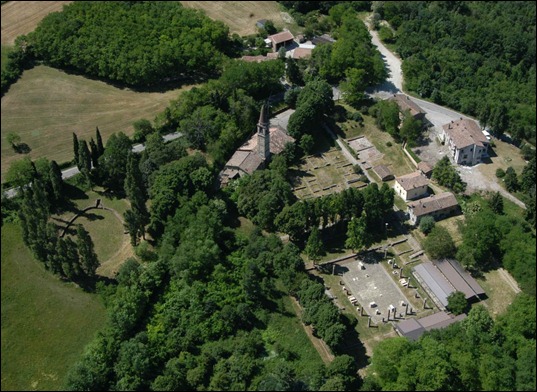 |
| An aerial view of Veleia Romana with la chiesa di Sant’Antonino |
I brush away the golden quilt of dry lime flowers that has gently settled on me whilst I was having my penichella (afternoon sleep), sit up, and look down through the trees to the remains of the ancient Roman town of Veleia Romana. Veleia is my favourite type of archaeological site, a romantic ruin. I’ve never had the ability to memorise dates, facts and figures. I’ll dutifully start to read a tourist guide, but usually after a couple of paragraphs I’m bored, and besides, even if I did read it, ten minutes later I would have forgotten just about everything.
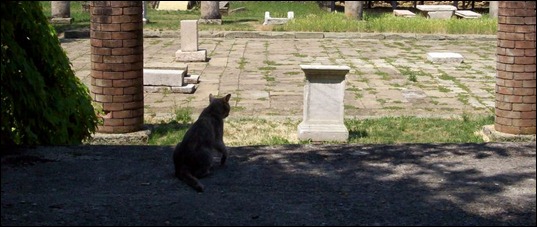 |
| The only inhabitants these days are a family of cats. This one looks out over the deserted forum |
I like to ‘feel’ my way around a historical site, I need to touch the weathered stones, run my fingers along the ruts carved into the slabs 2,000 years ago by countless wheels and feet, imagine that the insistent chirping of the cicale and scent of dried leaves heated by the noon sun would have been pretty much the same when this was a living breathing town, the citizens going about their everyday lives here amongst the foothills of the Appennino Tosco Emiliano.
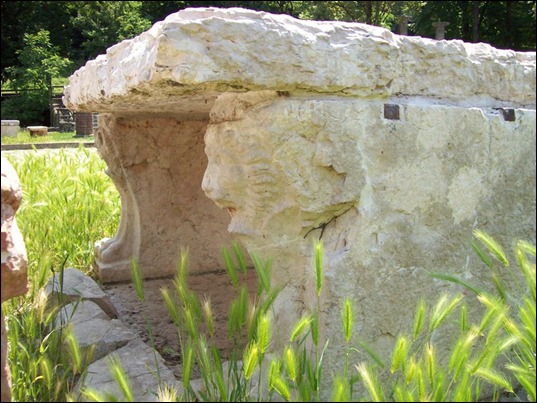 |
| The remains of a Roman market stall on the edge of the forum |
Discovered by accident in 1747, when the incredible Tabula Alimentaria was unearthed, excavations at Veleia began in earnest from 1760 under the directive of don Filippo I di Borbone, duca di Parma, in direct competition with his brother Carlo III di Borbone, re di Napoli, who at the time was busy excavating the infinitely more famous Pompei. The Tabula, which is the largest Latin inscription on bronze in the world, lists loans made to the citizens during a period of crisis by the emperor Traiano. It is now housed in the Museo Archeologico di Parma which was itself initially founded to house the many important relics discovered at the site.
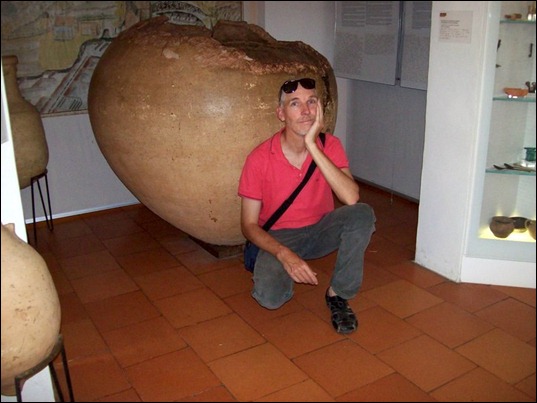 |
| An impressive doglio, or Roman storage jar unearthed at Veleia, photo by Serena |
If you find yourself in the Parma region, and plan a visit to the very interesting Museo Archeologico di Parma, I would highly recommend a side trip to Veleia. It’s set in a tranquil rural location, is un-touristy (a big plus in my books) and is not far from the stunning medieval town of Castell’Arquarto, but that’s another blog.
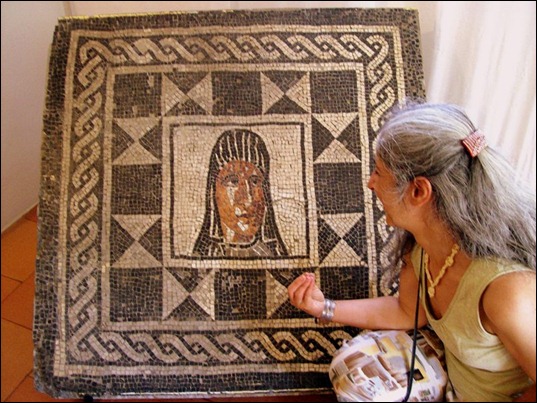 |
| ma che vuoi? |

Build vocabulary, practice pronunciation, and more with Transparent Language Online. Available anytime, anywhere, on any device.




Comments:
Mike / A Path to Lunch:
Velleia is fascinating. We visited for Corpus Domini as they have an infiorata in the church, along with guided tours of the ruins. We felt right at home since some of the names on the Tabula have been linked to the Aulella valley in Lunigiana, and much of the marble came from Luni/ Carrara.